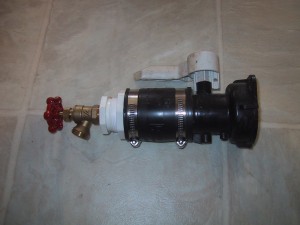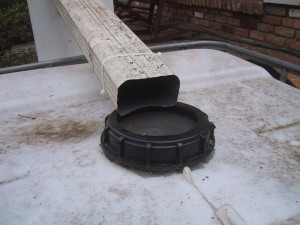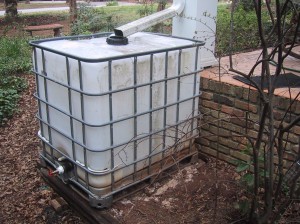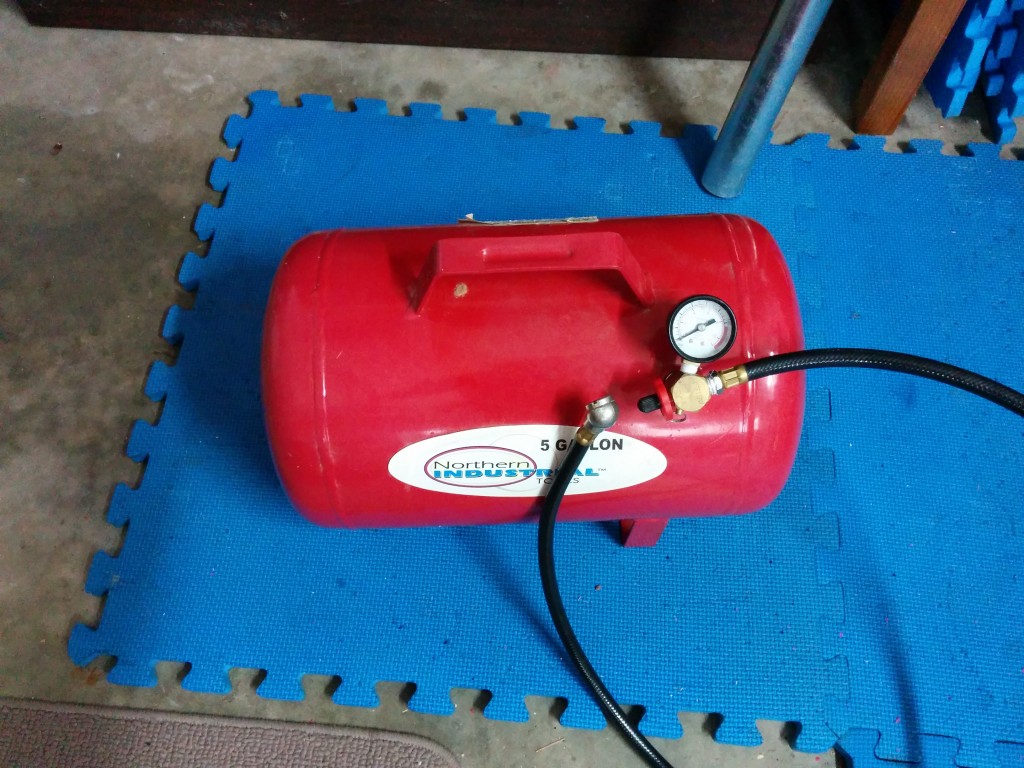I was recently given a 264 gallon liquid tote tank. That’s 1000 liters for you non-americans. These tanks are typically used to transport and store liquid products such as corn syrup or dish soap for small to medium sized industrial processes (large industrial processes get tanker cars full of liquid….). The tank itself is made of HDPE (high density polyethylene), which is the same plastic that milk jugs are made of, recycling number “2” (but it’s quite a bit thicker!) and it is protected by a galvanized steel cage with forklift points on the bottom.
Unfortunately, mine come with a semi-proprietary valve and nozzle. To make it into a (large!) rain barrel, I wanted to attach a standard 3/4″ hose bib. Because the threads on the tank and the nozzle would not mate with standard PVC pipe, the best approach I found was to use a flexible 2″ to 2″ rubber coupler. One end went over the existing nozzle, and the other end went over a Schedule 40 PVC 2″ to 1.5″ threaded adapter, followed by a 1.5″ to 3/4″ threaded adapter, followed by a 3/4″ boiler drain. I could have used the more standard 1/2″ boiler drain, but I figured the extra 1/4″ would help my flow rate, as the tank won’t really be pressurized. I didn’t even need any PVC cement, just a few wrenches and some pipe thread tape.

Here is the finished product, showing the pre-existing valve and nozzle that I had temporarily removed from the tank to make assembly easier. (And to take to the hardware store to confirm that they had nothing that would natively tread onto it.)

I cut the middle out of the 6″ cap on the top of the tank, used some window screen to try and keep mosquitoes and debris out of the tank, and re-routed my downspout to feed into the top of the tank.

Currently I don’t have a “roof washer” setup, but my gutters have a “roof” system to keep out large debris, and I’m not worried about a little bit of silt. I also don’t have a dedicated overflow system other than the fact that the tank itself has a grove on either side of the cap so that any water that overflows runs down the side at least two feet away from the foundation of the house, and it’s on a hill going away from the house. I intend to use the water almost as fast as I collect it, and the point of the tank is to act as a buffer during really big rainstorms that would produce more water than a standard garden hose could transfer. The roof area for this downspout is 1200 sq ft, so it would take around 0.3 inches of rainfall to fill the tank, which would take heavy rain for an hour.


![Generating power from Dry Ice [CO2 (s)] via a peltier junction Generating power from Dry Ice [CO2 (s)] via a peltier junction](https://www.summet.com/blog/wp-content/uploads/2007/01/dry_ice_amp.thumbnail.jpg)

